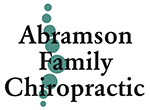The Sacroiliac Joints Are an Overlooked Pain Generator
In a recent literature review, researchers found disorders of the sacroiliac joints (which connect the sacrum and pelvis) may be a primary or contributing cause of 27% of back pain cases. Doctors of chiropractic are trained to assess the function of the sacroiliac joints when patients present with low back or pelvic pain and to apply manual therapies with the aim of reducing pain and improving function. Journal of Orthopedics and Trauma Surgery (Germany), October 2022
Many People Are Not Prepared for Medical Emergencies
The American College of Emergency Physicians (ACEP) recently conducted a poll of 2,199 adults and found that only 55% could provide CPR, 47% knew how to apply a tourniquet to control severe bleeding, and 29% felt they could use an automated external defibrillator to address sudden cardiac arrest. American College of Emergency Physicians, January 2023
Omega-3 Fatty Acids May Help Manage Chronic Low Back and TMJ Pain
According to a recent study, a higher ratio of omega-3 to omega-6 fatty acids in the blood is associated with less intense pain in patients with either chronic low back pain or chronic temporomandibular joint (TMJ) pain. Journal of Pain, October 2022
Great Home Cardio Workouts
Current fitness guidelines recommend engaging in a minimum of 30 minutes of moderate-intensity physical activity a day. Some activities you can perform at home to meet these guidelines include jumping rope, climbing stairs, yoga, house/yard work, and gardening. MedicineNet, January 2023
Osteoporosis May Raise Cognitive Impairment Risk
Following a review of data from eight studies that included more than 130,000 participants, researchers report that individuals with osteoporosis may have a two-times increased risk for cognitive impairment. Archives of Gerontology and Geriatrics, March 2023
Wellness/Prevention: Laser Treatment May Prevent Skin Cancer Recurrence
A review of records of patient with a history of basal or squamous cell cancer found that those treated with a laser were nearly 50% less likely to develop new skin cancers in the area, and for those who did experience recurrence, it took longer than in patients treated by other means. Dermatologic Surgery, January 2023
“All truths are easy to understand once they are discovered; the point is to discover them.” ~ Galileo Galilei
This information should not be substituted for medical or chiropractic advice. Any and all health care concerns, decisions, and actions
must be done through the advice and counsel of a health care professional who is familiar with your updated medical history.
